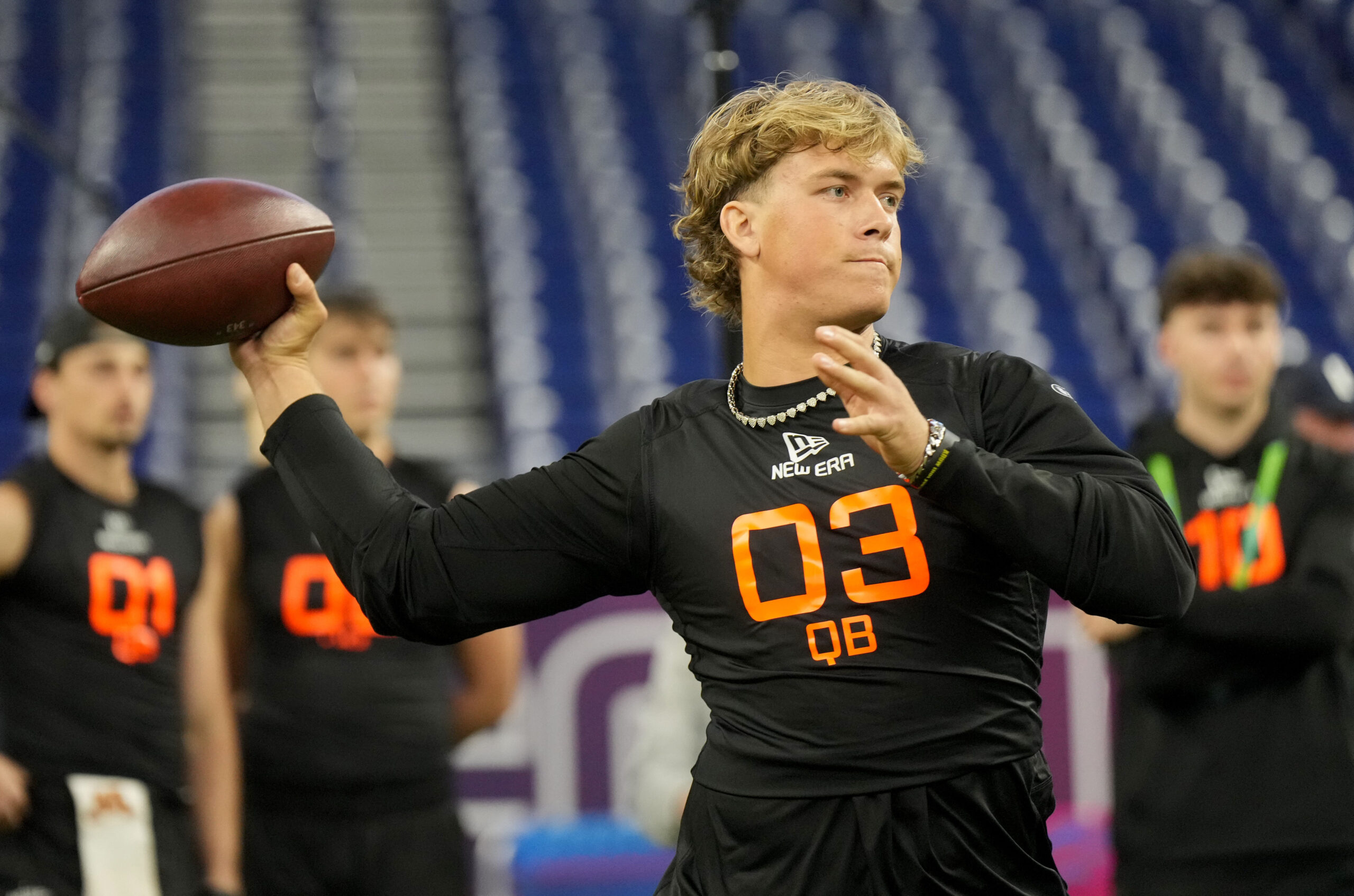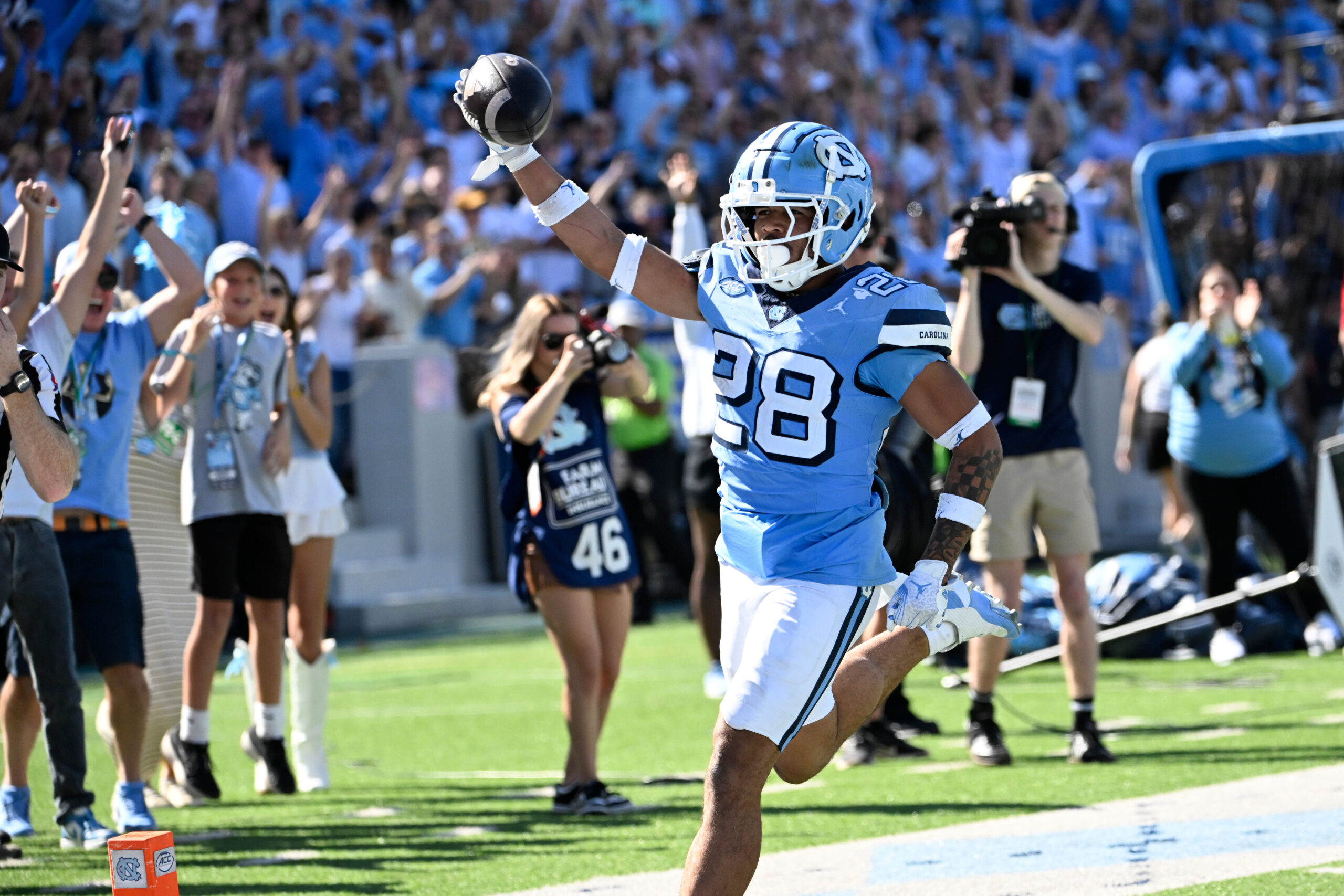Analysis
5/10/23
5 min read
Fantasy Best Ball: Finding Undervalued Players Relative to Upside

Ambiguity, derived from the Latin word ambiguus through the combination of ambi (meaning “both”) and agere (meaning “to drive”), is defined by Merriam-Webster as a word or expression that can be understood in two or more possible ways pertaining to uncertainty. Stripped down, the literal meaning of “to drive both” hints at multiple potential explanations depending on the person interpreting the problem.
If we then consider this concept as it relates to the game of football, the various news cycles throughout the offseason and the complexities of best ball strategy and game plan development, we can begin to see the building blocks of strategic importance in a game with borderline limitless variance.
This article will attempt to identify the upside in best ball by examining ambiguous situations around the league, with particular attention paid to a range of outcomes of individual players weighted against average draft position (ADP) in early best ball drafts. The goal is to find players undervalued relative to their respective upside in the 2023 season.
In this piece, we will first lay the framework for identifying the potential for closing line value (CLV) in ADP before looking at specific examples in the current best ball landscape through follow-on works. We will accomplish this task by exploring changes in coaching and personnel, expected team volume and efficiency, and finishing with an individual range of outcomes projections by analyzing important predictive metrics and incorporating potential outliers via injuries (and other variant outcomes). Once complete, we can compare this range of outcomes to ADP to identify players priced incorrectly in early best ball drafts.
Things to Consider
[bc_video video_id="6320113294112" account_id="6312875271001" player_id="default" embed="in-page" padding_top="56%" autoplay="" min_width="0px" playsinline="playsinline" picture_in_picture="" language_detection="" application_id="" max_width="680px" mute="muted" width="100%" height="100%" aspect_ratio="16:9" sizing="responsive" ]
Coaching and Personnel Changes
The NFL historically sees the highest turnover rate of coaches and personnel of any major sporting league, which very clearly has a significant influence on the range of outcomes of performance expectations for both complete teams and individual players. It is important first to examine these changes before we can confidently project team volume and efficiency.
Team Volume and Efficiency
Expected team volume and efficiency are much easier to project accurately than individual performances due to the typically robust historical data we have at our disposal for various coaching regimes and schemes. We can use this data to build the starting point for team projections with particular emphasis placed on volume and efficiency baselines. Historical coaching and situational play-calling tendencies will be used to narrow down the statistical dataset.
Individual Projections
Once we have established a baseline projection for each team in the league, we can apply important individual performance metrics that will narrow down the individual range of outcomes for major offensive skill position players. We will use this data to compare players whose range of outcomes does not align with current ADP. The ADP utilized for this study will be pulled in real-time from Underdog’s flagship contest, the Best Ball Mania IV (BBMIV).
Important Metrics
Quarterbacks
- Completion Rate (Comp percentage)
-
- Number of passes completed divided by total pass attempts
- Intended Air Yards per Pass Attempt (IAY/PA)
-
- Average depth of target for quarterbacks
- Adjusted Yards per Attempt (AY/A)
-
- A formula used to account for passing touchdowns and interceptions thrown
Running Backs
- Opportunity Share
-
- Rate of opportunities (carries plus targets) in the backfield
- Red Zone Opportunity Share
-
- Percentage of backfield opportunities within 20 yards of the end zone
- True yards per Carry
-
- Eliminates runs greater than 10 yards
- Breakaway Run Rate
-
- Percentage of carries of 10 or more yards
Wide Receivers and Tight Ends
- Targets per Route Run (TPRR)
-
- Target rate when in a route
- Route Participation
-
- Percentage of passing plays in a route
- Target Rate
-
- Percentage of total target volume
- Average Depth of Target (aDOT)
-
- Average depth of pass when targeted
- Red Zone Target Share
-
- Target rate inside the 20
Variance-Induced Upside and Downside
One of the more difficult aspects of developing a range of outcomes for individual players is accounting for any potential changes in underlying metrics based on variant acts to other contributors in a player’s offense, such as injuries, off-the-field issues, disciplinary actions, and other health concerns/issues. For example, how would an injury to his quarterback influence a wide receiver’s expectation? Or how would a secondary wide receiver’s expectations change with an injury to the primary wide receiver? Or how would a backup or change of pace running back’s expectations change with an injury to the starter?
These are some of the most important questions to be asked when developing a range of outcomes and expectations for players in the NFL, yet very few best ball players or analysts pay them any regard. These outlier scenarios will help establish the upper and lower bounds of our player projection model, which can be used to derive full ranges of outcomes for the major skill position players in the league.
Completing this statistical analysis and projection will allow us to compare a player’s entire range of outcomes to their ADP instead of simply comparing median projections, which is what most analytically based models do in a given projection system.
The remaining works in this series will leverage the dataset derived through these methodologies to compare the ranges of outcomes of individual players around the league to their current Underdog ADP to classify mispriced players.
Follow The 33rd Team Podcast Network on Spotify and Apple Podcasts.






